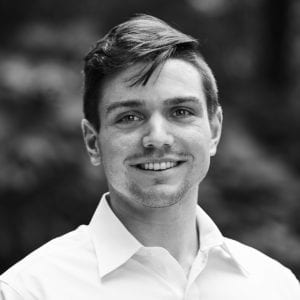The National Center for Advancing Translational Sciences (NCATS) of the National Institutes of Health (NIH) and the Center for Biologics Evaluation and Research (CBER) of the Food and Drug Administration (FDA) recently held a workshop on Expanding AAV Manufacturing Capacity for Rare Disease Gene Therapies.
This workshop was essential to the continued development of AAV gene therapy, a relatively new and exciting therapeutic modality for the treatment of rare disease. The Adeno Associated Virus (AAV) is a virus which has been genetically manipulated for gene therapy applications. The virus is able to deliver a therapeutic gene of interest without causing any severe adverse events in patients living with recessively inherited disorders. In recent years, two gene therapies have been approved for rare recessive disorders including LUXTURNA for the treatment of pathogenic biallelic mutations in RPE65 and ZOLGENSMA for the treatment of pathogenic biallelic mutations in SMA1. In both diseases, an AAV gene therapy is administered to patients to deliver a healthy copy of either RPE65 or SMA1 to prevent and correct manifestations of the disease.
The great potential of AAV gene therapy is currently limited by the amount of AAV that can be manufactured at a high quality. Current Good Manufacturing Practices (cGMP) facilities are required to manufacture the degree of AAV gene therapy quality required to administer to patients. These facilities are expensive to build and operate which limits the ability of organizations to quickly expand capacity. Contract Development and Manufacturing Organizations (CDMOs), which specialize in cGMP AAV gene therapy production, are unable to keep up with the current demand and can be booked for years into the future. In addition to the logistical challenges of manufacturing AAV gene therapies, there are also limitations related to the current manufacturing ability. The yield of current production lots of AAV gene therapy are only capable of treating relatively small patient populations and not designed for rare diseases with larger populations. In response to both of these emerging difficulties, NCATS and CBER brought together world renowned researchers in AAV gene therapy to discuss their work in developing solutions to expanding AAV gene therapy production capacity.
The first day of the workshop started with welcoming remarks by Dr. Christopher Austin, the director of NCATS, which then transitioned to introductory remarks by Dr. Peter Marks, the director of CBER. Dr. Peter Marks started the discussion by describing the potential of gene therapy in the context of the current regulatory outlook. The first session of the morning, moderated by Dr. Guangping Gao of UMass Medical School, included speakers Dr. Steven Gray of the UT Southwestern Medical Center, Dr. Barry Byrne of UF Health, Dr. Nathalie Clement of the University of Florida Powell Gene Therapy Center, and Dr. Rob Kotin of UMass Medical School. Discussed among all of the session speakers were descriptions of current AAV gene therapy manufacturing formats. One of the most common AAV gene therapy manufacturing methods is the triple transfection in HEK293 cells. Triple transfection provides cells with the necessary raw materials to make all of the bits and pieces that eventually come together to create the AAV gene therapy with the gene of interest. This mode of manufacturing is one of the most common in the creation of high quality AAV preparations for use in human clinical trials.
Another notable session on the second day of the workshop, chaired by Dr. Nicole Paulk of UCSF, discussed innovative approaches in expanding AAV manufacturing capacity. The session’s speakers included Dr. Nicole Faust of CEVEC( Germany), Dr. Yuman Fong of the City of Hope Medical Center, and Audrey Greenberg of The Discovery Labs, LLC. Yuman Fong discussed really exciting work in high density cell culture. As mentioned before, cells are the factories in which AAV gene therapy vectors are produced. The work presented by Dr. Yuman Fong has the potential to lead to greater production capacity and hopefully lead to the treatment of more patients.
The workshop ended with a summary of the sessions and a discussion among the community in attendance on the future directions and the great impact workshops such as the one described have on advancing the AAV gene therapy field forward. Highlighted here are just a few examples of the groundbreaking work being done by academic and industrial researchers around the world to expand manufacturing capacity for AAV gene therapies. With more collaboration and the sharing of innovative work, as was done throughout the two days of the workshop, the AAV gene therapy community will be able to expand manufacturing capacity to ultimately develop the infrastructures required to ensure every rare disease patient who has the ability to be treated with AAV gene therapy has the option to do so and not be limited by production capacity.



